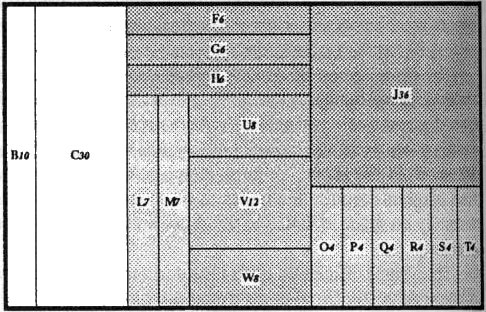Treemap: Difference between revisions
Jump to navigation
Jump to search
No edit summary |
No edit summary |
||
| Line 12: | Line 12: | ||
*[http://www.panopticonexplorer.com/ Treemaps of your own files, spreadsheets, databases, processes etc] | *[http://www.panopticonexplorer.com/ Treemaps of your own files, spreadsheets, databases, processes etc] | ||
*[http://www.magnaview.com/ A very fast tool that can create treemaps that look like business graphics] | *[http://www.magnaview.com/ A very fast tool that can create treemaps that look like business graphics] | ||
*[http://www.infovis-wiki.net/index.php?title=Web_Based_Visual_Exploration_of_Patent_Information Web Based Visual Exploration of Patent Information] | |||
== References == | == References == | ||
*[HCIL, 2003] Human-Computer Interaction Lab / University of Maryland, [http://www.cs.umd.edu/hcil/treemap/ Treemap]. Created at: August 5, 2003. Retrieved at: October 3, 2005. http://www.cs.umd.edu/hcil/treemap/ | *[HCIL, 2003] Human-Computer Interaction Lab / University of Maryland, [http://www.cs.umd.edu/hcil/treemap/ Treemap]. Created at: August 5, 2003. Retrieved at: October 3, 2005. http://www.cs.umd.edu/hcil/treemap/ | ||
Revision as of 22:55, 27 May 2009

[Johnson and Shneiderman, 1991]
Treemaps [Johnson and Shneiderman, 1991] are a rectangular, space-filling approach for visualizing hierarchical data. They use 2D visualization of trees where the tree nodes are encapsulated into the area of their parent node. The size of the single nodes is determined proportionally in relation to all other nodes of the hierarchy by an attribute of the node.
External Links
- Home of Treemap (HCIL, University of Maryland)
- Treemap related Software Applications
- TreeMap Java Library
- Treemaps of your own files, spreadsheets, databases, processes etc
- A very fast tool that can create treemaps that look like business graphics
- Web Based Visual Exploration of Patent Information
References
- [HCIL, 2003] Human-Computer Interaction Lab / University of Maryland, Treemap. Created at: August 5, 2003. Retrieved at: October 3, 2005. http://www.cs.umd.edu/hcil/treemap/
- [Johnson and Shneiderman, 1991] Johnson, B. and Shneiderman, B. Treemaps: A Space-Filling Approach to the Visualization of Hierarchical Information Structures. In Proceedings of the IEEE Information Visualization ’91, pages 275–282, IEEE, 1991.